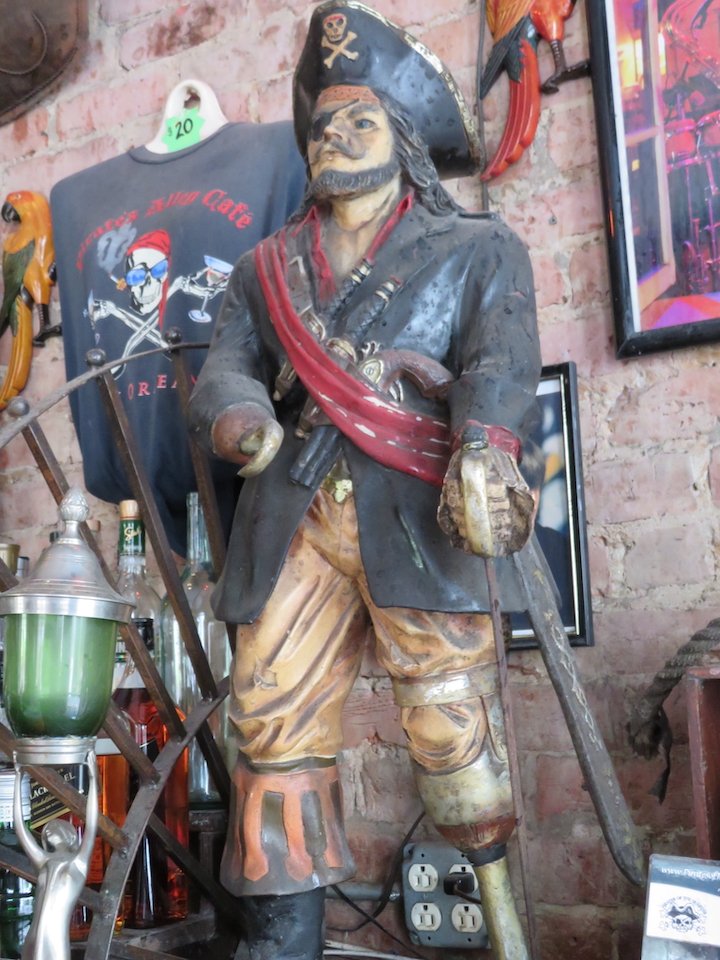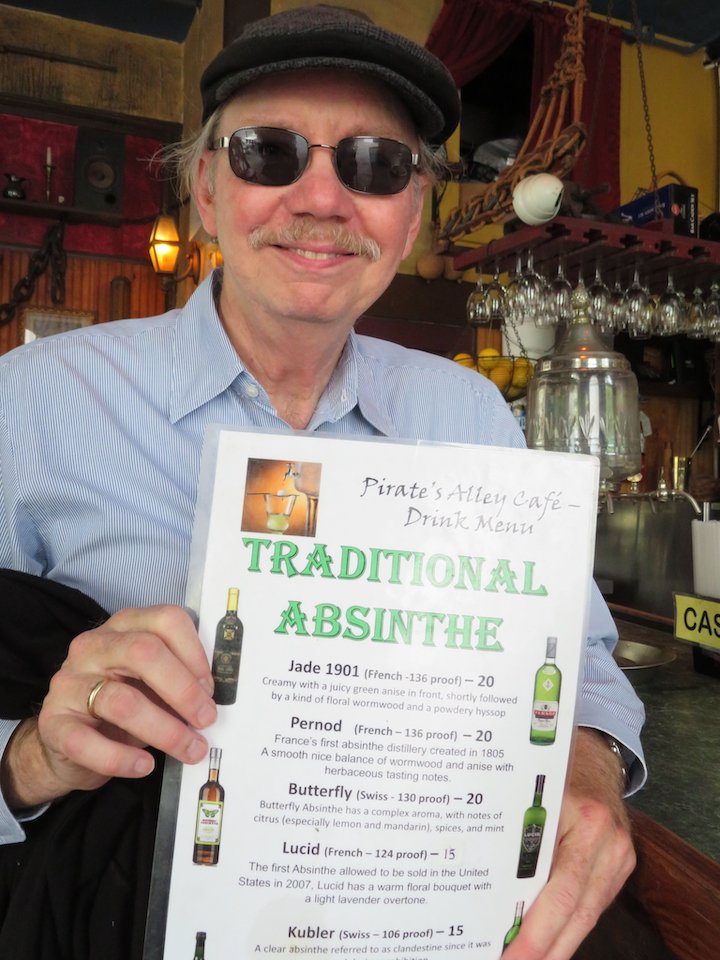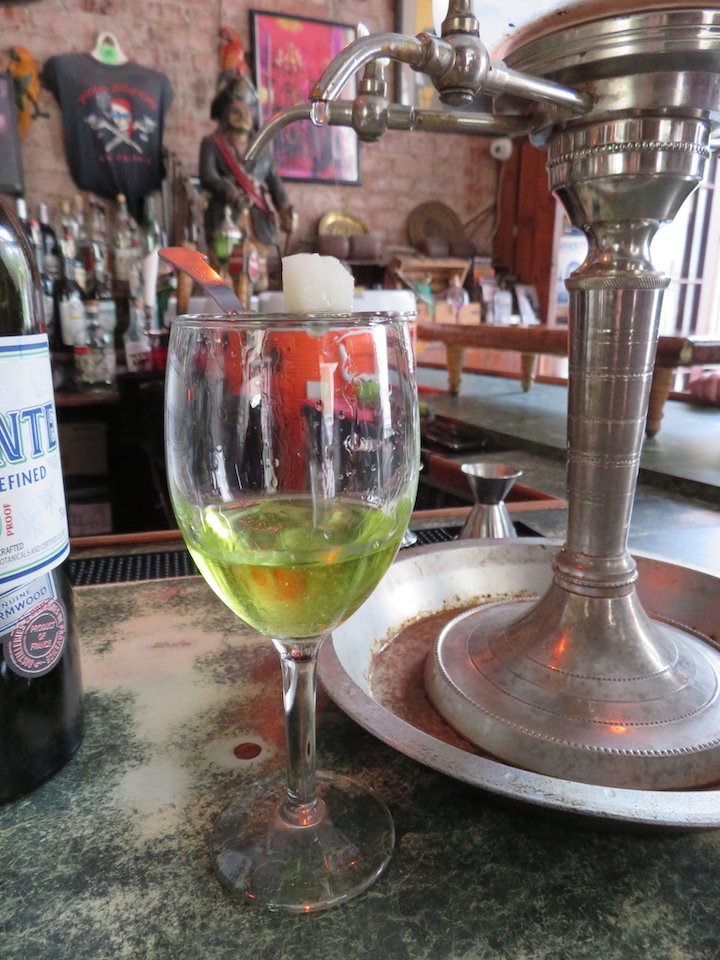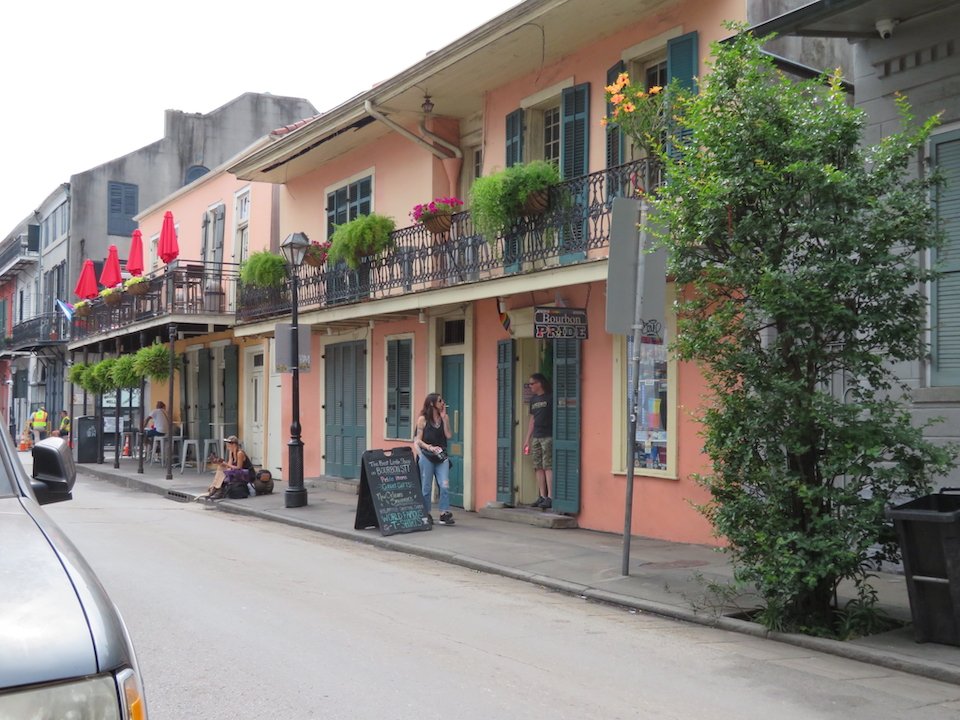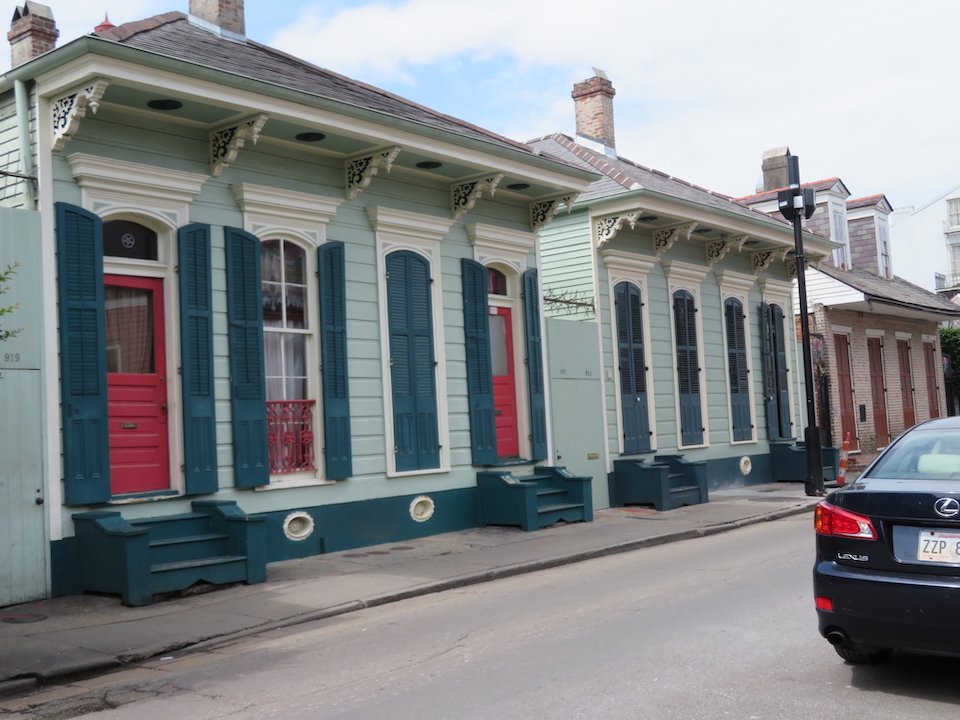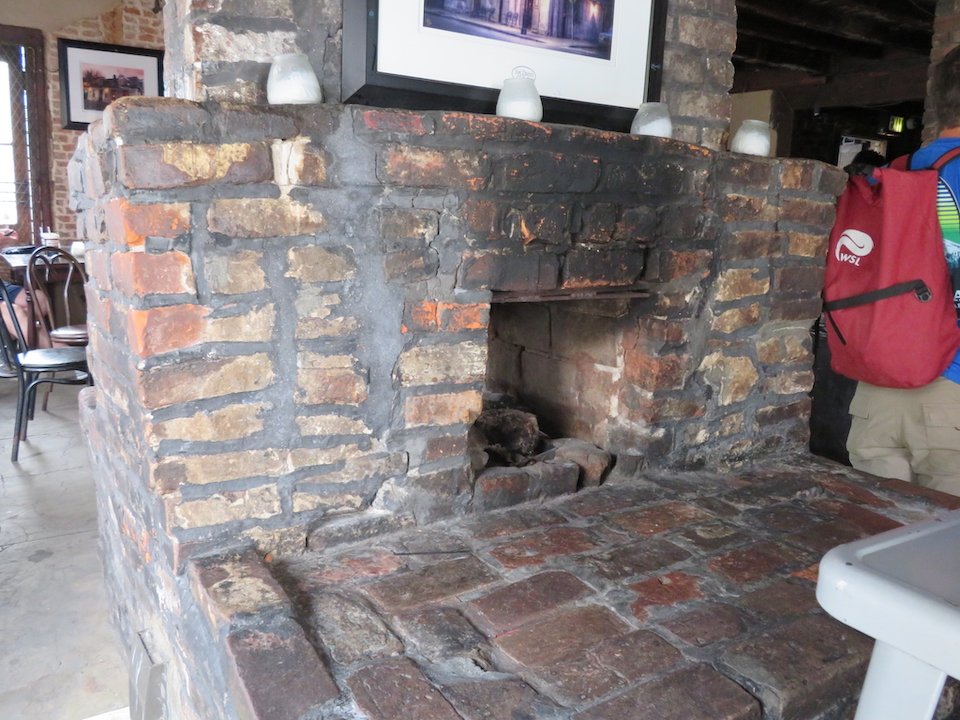A Pirate Adventure In New Orleans
By Carolyn Handler Miller
As a child, my favorite ride at Disneyland was Pirates of the Caribbean, the raunchy original one, not the one promoting the movie and infused with Jack Sparrow. The first pirate crew got to do everything forbidden to a child: run wild, get drunk, loot valuables and create mayhem, all the while looking so jolly. Much as I enjoyed the ride, I had assumed the pirates were fictional characters, like everything else at Disneyland, and like other characters I’d admired, such as the Lone Ranger and dragons. Pirates also studded my favorite children’s stories: who could forget Long John Silver from Treasure Island, or Captain Hook from Peter Pan?
In the deep recesses of my mind, being the shy and somewhat cautious girl that I was, I had trouble believing that characters that audacious, that defiant, could be anything but make-believe. That is, until I grew up and took my first trip to New Orleans this spring. That’s where I learned that authentic, real-life pirates once strode the city streets. It inspired me to sample as much of the pirate life as I could. My husband Terry, always good-natured, agreed to come along as my bodyguard.
The pirates of NOLA are well-documented personages in the city’s history, especially in the French Quarter. Though they are not still alive, they live on heartily in the city’s past. The best known of these pirates is Jean Lafitte, who was also known as the “Terror of the Gulf”. Many streets and businesses still bare his name today. Lafitte plied his trade on the Mississippi and the surrounding bayous in the early eighteen hundreds. For Jean and his older brother, Pierre, it was a thriving family business. Pierre primarily handled the business affairs, while Jean was in charge of their fleet of ships. During Jean’s life, he was lauded for making pirated luxury goods available to folks in New Orleans who had no other way of acquiring them. Surprisingly, he even returned some of the ships he captured – either an act of generosity, or simply a practical gesture – evidently these ships were not suitable for pirateering.
Of course, many aspects of a pirate’s life are unsavory. A pirate’s modus operandi includes attacking victims with knives, swords and muskets; rape and murder; robbing vessels of valuable goods; and sinking ships. Pirating made a terrifying comeback in the modern world with desperate Somalis creating mayhem on the Indian ocean and Arabian Sea. But Jean Lafitte seems to have been a gentleman pirate. Though, like all pirates, he was said to be fond of gambling, drinking, and women, he was well-dressed, well-mannered and widely respected.
Once we in landed in New Orleans, I set my sights on two places closely associated with Lafitte: Pirate Alley and Lafitte's Blacksmith Shop. Pirate Alley is a narrow passageway, boarded on one side by vintage two and three-story buildings and on the other side by the park of St. Louis Cathedral. It is only about one block from the Mississippi. Many believe pirates used the narrow passageway as an inconspicuous path to the river and their waiting ships. As we walked down this almost hidden street, I could well believe this. Not only is it just wide enough for pedestrians; it’s even difficult to find.
Walking down this narrow passageway, I could feel like a swaggering pirate who carried a map of New Orleans in his head. And this little street held one particular attraction for me personally and for me as a pirate: Pirates Alley Café. It features an elixir of legend: absinthe, also known as “The Green Fairy”. Which was once illegal and was the intoxicant of choice for many great French rule breakers. I wanted to know what made this drink so celebrated and dangerous.
After a few missteps, we located the cafe and headed in to sample a drink I could well believe Lafitte himself enjoyed. Absinthe is served here with the traditional ceremony. A table-top absinthe “fountain” is filled with ice and water. A small amount of the clear absinthe liquor is poured into a glass. A perforated spoon is placed over the glass, topped with a sugar cube. The glass is placed under one of the fountain’s four spigots, the handle of the spigot is turned, and water dips out, over the sugar cube, through the spoon and into the glass. As it does, the liquid begins to turn a mesmerizing green, changing shades with every drip. A little nervously, we took our once-forbidden drink out to a café table in the alley. What might it do to us?
As I sipped the licorice-tasking drink, it brightly stimulated my imagination but did not bring on insanity. I could easily imagine myself as one of band of pirates enjoying a rare shore leave before returning to a raucous life on the water. I did not feel intoxicated, though, just a pleasurable sense of all being right in the world. Of course, the “pirate me” felt a little arrogant, too, because pirates were lords and masters of the sea. Perhaps Lafitte once sat in this very spot, safe from prying eyes, happily dreaming of adventures ahead.
When my glass was finally and reluctantly drained, we headed down the remaining stretch of Pirate Alley to Bourbon Street and the blacksmith shop. But first we had a surprise: just steps from the café we came upon a tiny but well-stocked bookstore, Faulkner House Books. William Faulkner, one of my favorite authors, once lived here as a young novelist. I can easily believe that Faulkner, like me, was attracted to this alley because of its colorful association with pirates. It was a little time out from my pirate fantasy; I doubt many pirates were literate.
At the end of Pirate Alley we reached Bourbon Street, lower Bourbon Street, which could not be more different from upper Bourbon Street, packed with bars, drunk tourists and a rowdy atmosphere. Lower Bourbon Street, by contrast, is a peaceful, uncrowded stretch of little old cottages. Soon we reached Lafitte's Blacksmith Shop, one of the oldest buildings in New Orleans. It looks the part, with aged brick walls and old-fashioned dormer windows. It is now a bar, like so many old buildings in NOLA, but in the past the Lafitte band of pirates supposedly met here to plot their escapades. Back then, it was believed to have been a blacksmith shop. The interior boasts a sturdy hearth which once might have been used for hammering out horseshoes. As a pirate, though, I wouldn’t be coming here for horseshoes – I’d be wanting the specialty knife that the people in my profession favored. The pirates’ knife was short and without a hilt, designed so it wouldn’t stick in the ribcage of the victim. It could be shoved in and out of the unfortunate’s body until he was done for. The thought sent a chill through my body.
We concluded our pirate adventure on the waters of the Mississippi. We were aboard a paddlewheel steamboat enjoying an evening jazz cruise on the river. But when the musicians took a break, and I leaned over the rail and gazed at the black water and the darkened buildings along the shore, I could easily imagine myself as a pirate, my sloop invisible in the dark, returning to my hidden harbor.
It was fun being a pirate for awhile, but then, I hadn’t had to face the dangers, the bloody knife fights, the brutality of that kind of life. I wasn’t really sorry that tonight I’d be back in my comfortable hotel room, instead of in a mosquito-infested camp in swampy bayou.
Carolyn Handler Miller (www.carolynhandlermiller.com) is a writer who works across a variety of media. Originally beginning her career as a newspaper reporter and magazine journalist, Carolyn's projects span TV shows and specials, feature films, books and new media. She is one of the pioneering writers in the field of interactive narrative, where she has contributed to over 50 projects as a writer, writer-story designer, and consultant. She is the author of “Digital Storytelling: A Creator's Guide to Interactive Entertainment” (Focal Press), now in its fourth edition.

